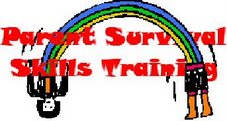Reaching Out To Young People Before They Reach Out To Alcohol And Drugs
By Mike Manko
By Mike Manko
The numbers are frightening; children as young as nine and ten taking their first drink, five thousand young people trying marijuana for the first time each day, more than one hundred thousand young people dying from drug overdoses in the last five years. It is clear that more so than ever before, the lives of young people are being impacted and in many cases ended by alcohol and drugs.
Three years ago, school district officials and members of law enforcement from throughout Allegheny County approached the Allegheny County District Attorney’s Office asking if a program existed that could help to educate parents, teachers and students about the trends and the dangers of mixing drugs and alcohol. Although the DARE (Drug Abuse Resistance Education) program has been available to elementary age children for several years, there was no specific program to tackle the issue of middle school and high school students having to deal with decisions involving alcohol and drugs. District Attorney Stephen A. Zappala Jr. recognized an opportunity to begin a dialogue with these groups and to engage those same groups in their communities and on their schedule. “Historically, the District Attorney’s Office has been a reactive entity, taking care of problems after they occur,” said D.A. Zappala. “For the past decade, I’ve welcomed the opportunity to get involved on the front end of situations, before problems begin to manifest themselves.” Having such a dialogue and line of communication is crucial because the overwhelming majority of young people have yet to make important and life altering decisions about substance abuse.
In addition to the overall threat of substance abuse involving teens and pre-teens, the request for assistance from District Attorney Zappala on this issue was prompted in part by a significant increase in heroin use in our area that began in the mid 1990’s and continues today. What has made the current popularity especially worrisome is the fact that the price of this drug has made it attractive and the potency of the drug is ten to fifteen times what it was when heroin was popular thirty years ago. “Part of the reason heroin was confined to a relatively small group of people in the 1970’s was because the purity of the drug was between five and seven percent and you had to use a needle to get high,” said Zappala. “People always have an aversion to injecting themselves, more so today because of the risk of HIV and Hepatitis. Now, we have heroin that is seventy to ninety percent pure and users who aren’t thrilled with the idea of sticking a needle in their arm can initially get high by snorting or smoking the drug.”
The initial version of the presentation was titled “Heroin is in Your Neighborhood” reflecting the increased popularity of the opiate based drug. Since then, it has been regularly modified to keep up with substance abuse trends, such as the presence of methamphetamine in our communities and the fact that one of the main avenues to drug abuse for young people is through prescription painkillers and anti-depressants. The constant changes in the way that young people become involved in substance abuse and the products and drugs being abused makes it extremely difficult to stay ahead of the curve on this issue, but one thing has remained constant; almost all addicts will start off with nicotine and alcohol.
“There is no doubt that the longer a child stays away from alcohol and tobacco, the better the chance of that child being able to enter young adulthood without the impact of substance abuse,” says D.A. Zappala. “And the more successful we are at preventing substance abuse now, the better our communities will be for the next generation.”
Communication and information remain the two most valuable resources when dealing with the threat of substance abuse. Being able to accept the fact that no matter the situation, every child in our community is a potential victim of substance abuse is vitally important. A recent New York Times article indicated that when communication in a family is lacking, problems that occur tend to be magnified. Even the simple act of setting aside time for a sit down meal can make a significant difference in how a family handles adversity and the pressures and problems that children experience as they age. The fine line involves being able to communicate with children while respecting who they are. The earlier that parents begin to ask questions and set up guidelines for behavior, the easier it will be to carry on that line of communication as children get older.
“We adults need to be better at everything we do,” says Zappala, “we need to be better parents, better leaders and better role models, not just for our own children but for the entire community.”
Mike Manko has served as communications director for District Attorney Stephen Zappala for more than six years and has given the presentation nearly 100 times. If you would like to schedule your group any time during the day or evening, Call Mike at (412) 350-3123.















No comments:
Post a Comment